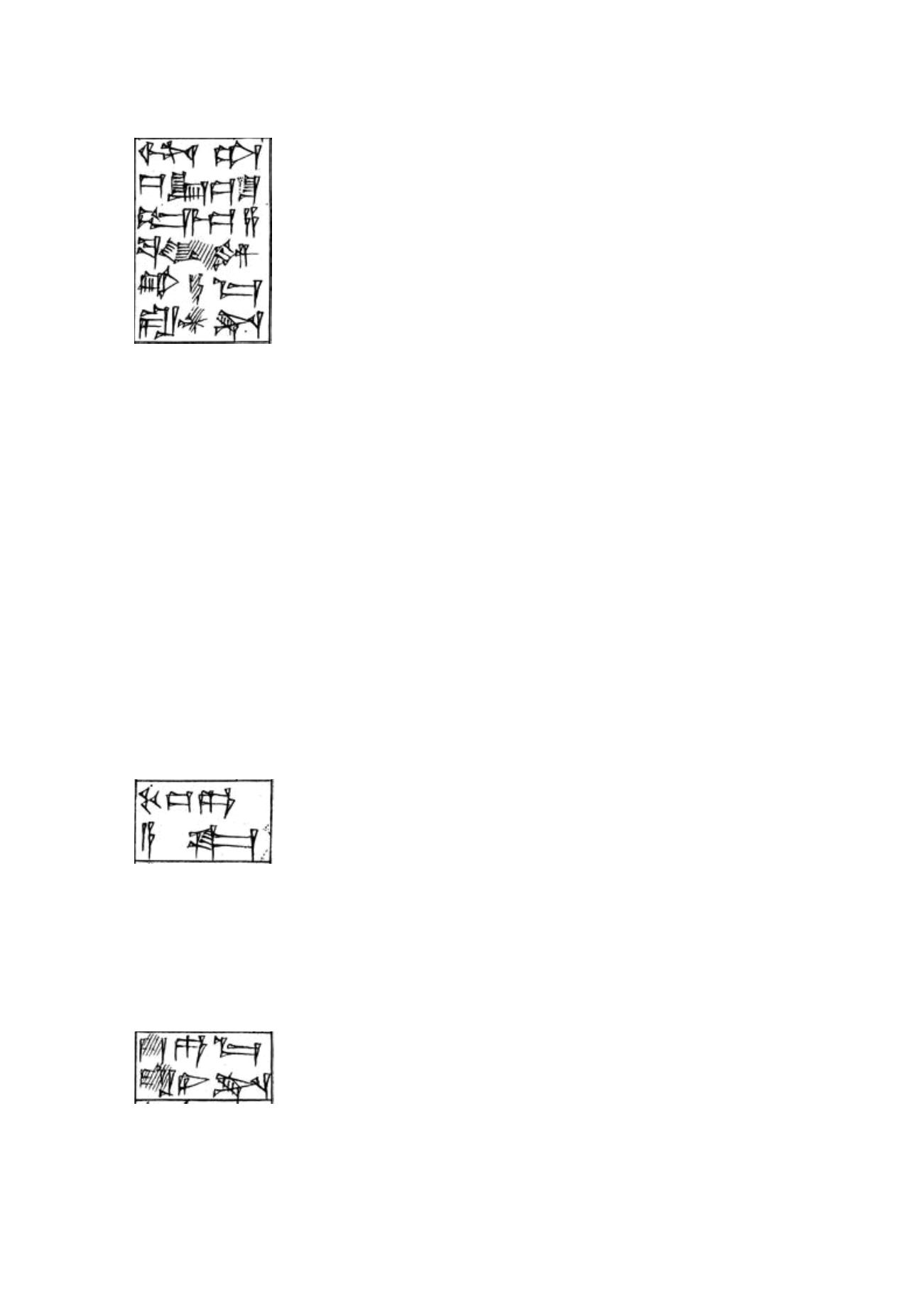

160
Gudea di Lagash – La costruzione del tempio di Ninjirsu - Cilindro A
A XII.5 - 308
igi.nim.tajiš.eren
jiš.šu.ur2
.me
jiš.za.ba.[
lum
]
ni
2
.bi.
[
a
]
ma.ra.
[
an
]
.tum
3
igi.nim.tajiš
eren
jiš
šu.ur2
.me
jiš
za.ba.lum ni
2
.bi.a mu.ra.ni.tum
3
.en
dall’altopiano cedro, cipresso e ginepro insieme ti porterò;
igi.nim : “haute region” (PLS.74); “das, wonach sich das Auge erhebt = hochliegend, oben” (GSG1.61);
“das, wohin das Auge erhoben wird = das Obere” (GSG1.144); “upper country - from Sumer either the
east or the northwest ('to face' + 'east')” (SL); nim : “ prince; flying insect; highland; east; morning”, “to
be high; to multiply in arithmetic”, “high; early”, “above” (SL) : “haut, au-dessus; prince; hautes-terres;
est, levant” (PLS.111)
jiš
eren : “cedro” (vedi A VIII.11)
jiš
šu.ur2
.me : “the cypress or Persian oak tree or its resin ('to pour' + 'tree trunk' + 'to be')” (SL)
jiš
za.ba.lum : “a variety of juniper (resin) ('kernel' + 'to give' + 'abundance')” (SL). Per l’asindeto, vedi GSG2.
40
ni
2
.bi.a : “von selbst”, col marker del locativo (GSG1.109; GSG2.113); ni
2
vale “même” (ni
2
.ju
10
“moi
même”; ni
2
.zu “toi même”; ni
2
.bi “soi même” : PLS.108)
mu.ra.ni.tum
3
.en : la desinenza finale .en di prima persona, di forma
marû
, ha subito la caduta della ‘n’ e
l’assimilazione della ‘e’ alla vocale ‘u’ precedente (GSG1.153); .ni è il DP del locativo-terminativo
(GSG1.208; cfr. A XII.7; penso si riferisca più che a ni
2
.bi.a, all’ablativo; vedi anche GSG1.46,
GSG2.152n7). Il verbo tum
3
vale : to bring; to carry away; to obtain; to be suitable, fit; to prepare (
marû
singular; in
marû
plural, tum
3
-tum
3
[-mu] or tum
2
- tum
2
-mu) (ta, 'from', + u
2
, 'food', + ma
4
, 'to leave');
“apporter, porter, emporter, transporter” (PLS.143); cfr. A VII.10
A XII.6 - 309
kur
jiš.esi.a.ka[kur
jiš
esi].ak.a
dalla montagna dell’ebano,
[kur
jiš
esi].ak.a : vedi ‘Der Lokativ in ablativischer Bedeutung’ (GSG2.144)
(na
4
)
esi[NI.UD.KAL]: “ébène; diorite” (PLS.48); “good, fine; solid, strong; ebony; diorite; olivine-gabbro”
(SL); giustamente PSD2.66 distingue
na
4
esi [NI.UD.KAL] “diorite, dolerite” da
jiš
esi [GIŠ.KAL] “a tree”
A XII.7 - 310
[
jiš
]
.esi ma.[ra
]
.ni.tum
3
jiš
esi mu.ra.ni.tum
3
.en
ebano ti porterò;
mu.ra.ni.tum
3
.en : vedi A XII.5
















